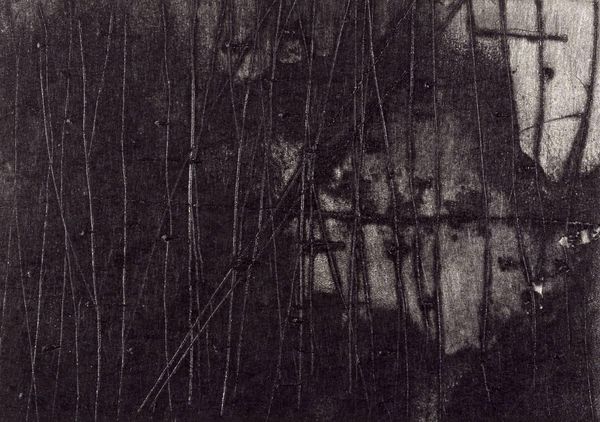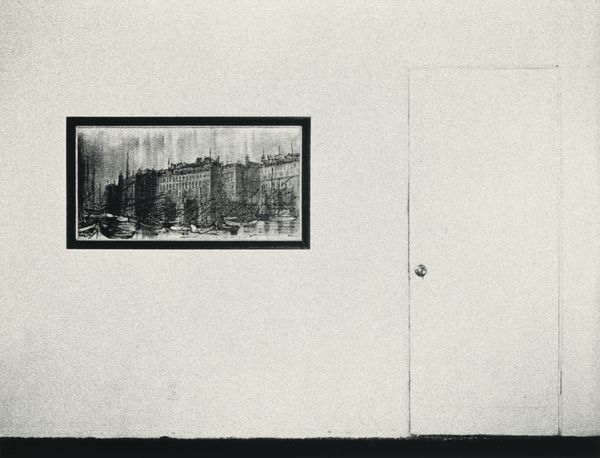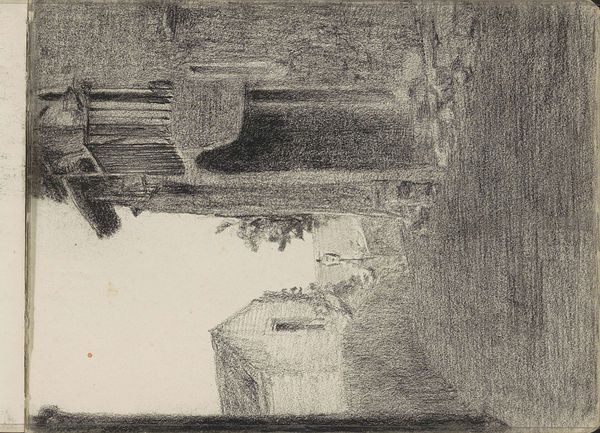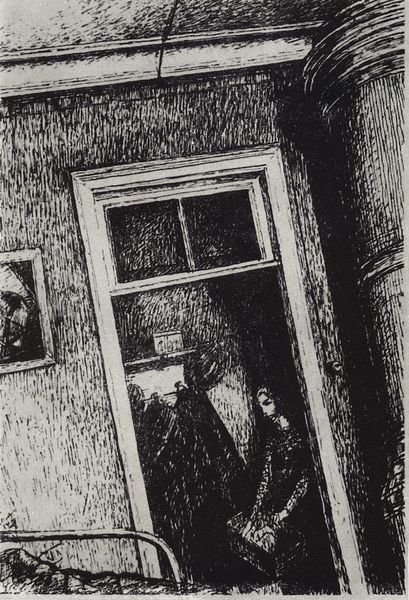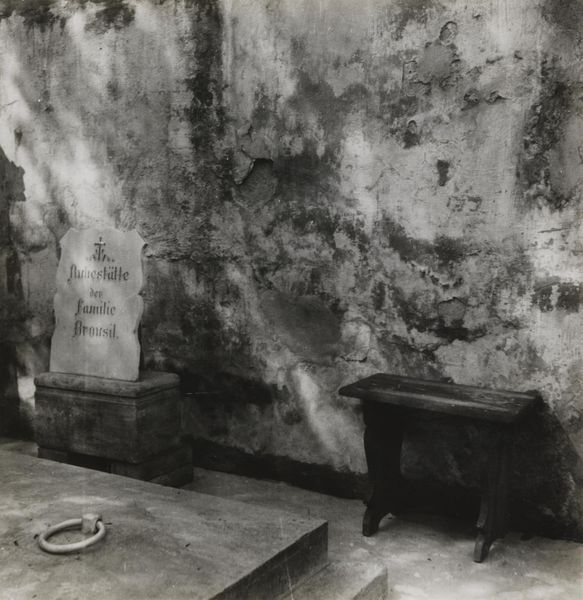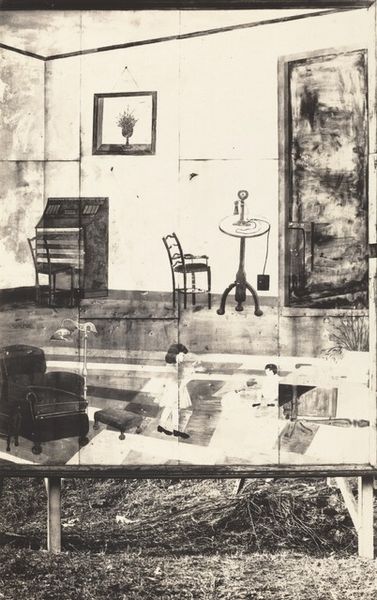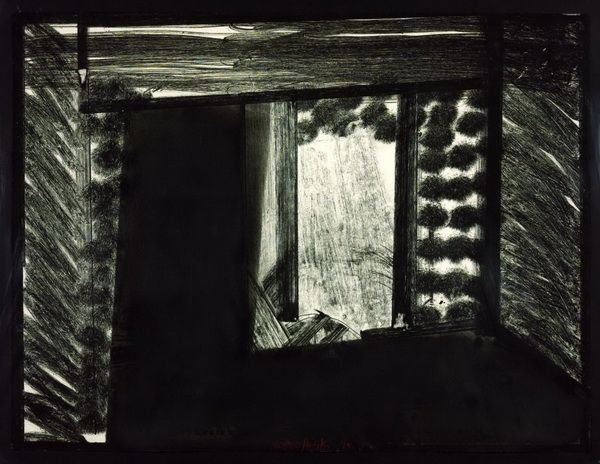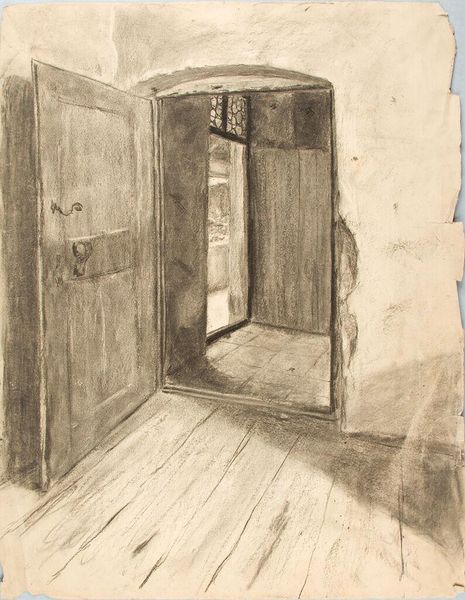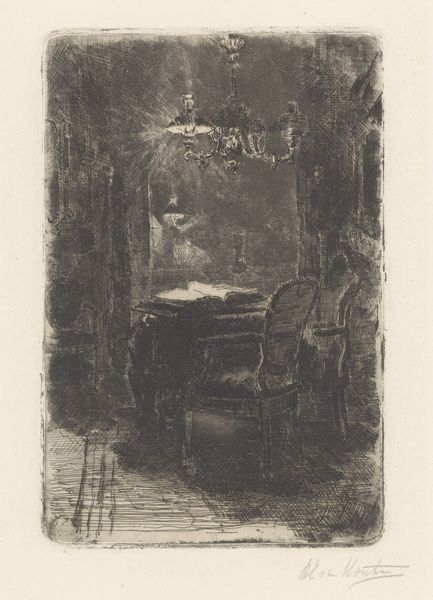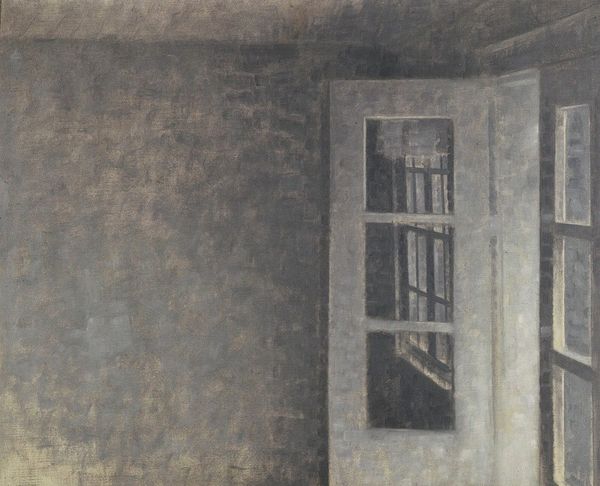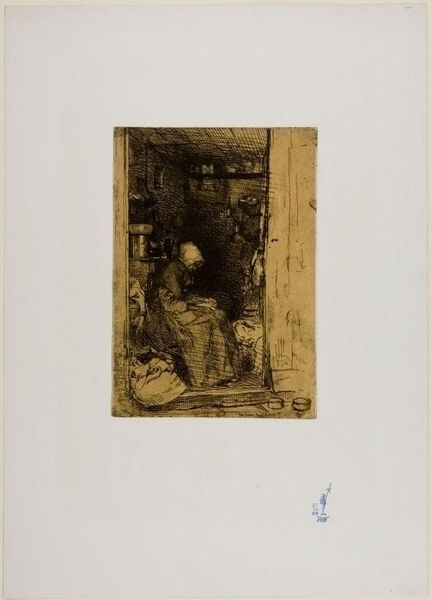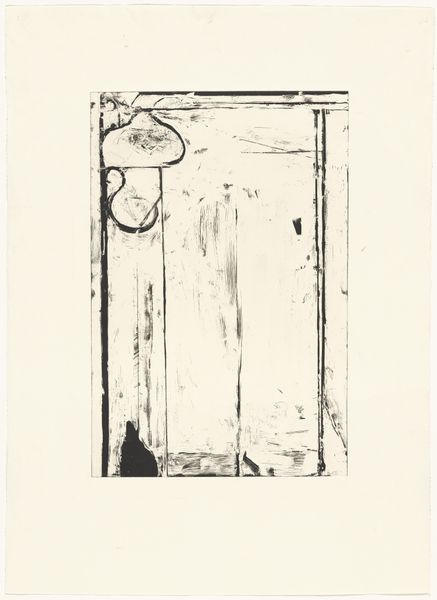
drawing, charcoal
#
drawing
#
self-portrait
#
sculpture
#
charcoal drawing
#
charcoal
#
charcoal
#
monochrome
Copyright: Avigdor Arikha,Fair Use
Editor: We are looking at Avigdor Arikha’s “Self-Portrait, Night,” a charcoal drawing from 1970. I find the stark contrast and texture really striking. What stands out to you in terms of its visual language? Curator: The emphasis on texture is certainly a key element. Consider how Arikha uses charcoal to build up areas of intense darkness alongside sections of near-white paper. Notice especially the layering of strokes—they almost vibrate on the surface, disrupting any easy reading of depth. Does that intentional awkwardness speak to you? Editor: Yes, absolutely. The lack of a smooth tonal range creates a kind of unease. Is that also connected to the composition, perhaps? The dark void on the left, the cluttered wall on the right... Curator: Precisely. The composition reinforces this disruption. The stark, almost brutal contrast between the flat darkness and the detailed, almost frenetic mark-making pulls the eye in multiple directions simultaneously. Think about the visual weight; how the arrangement contributes to the overall unsettling mood. It begs the question, what is the artist trying to communicate through the arrangement of light and shadow, and the texture of the medium itself? Editor: It feels almost like a study in contrasts—dark and light, detailed and blank, self and surrounding space. Thank you for guiding me through that. I see so much more in the formal qualities now. Curator: Indeed, a work of this nature demands a keen attentiveness to the purely visual aspects; it serves as a reminder that artistic intention is embedded not only in subject matter, but more crucially in the deliberate manipulation of form and medium.
Comments
No comments
Be the first to comment and join the conversation on the ultimate creative platform.


